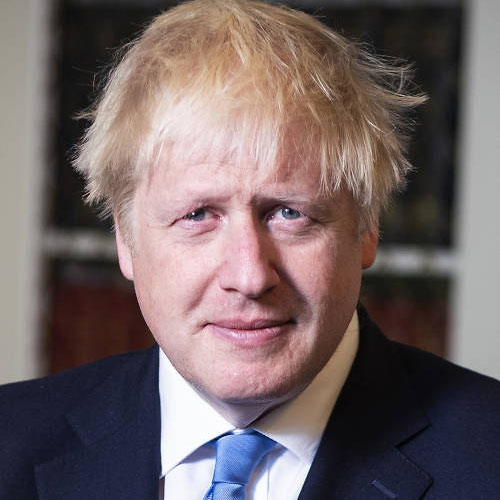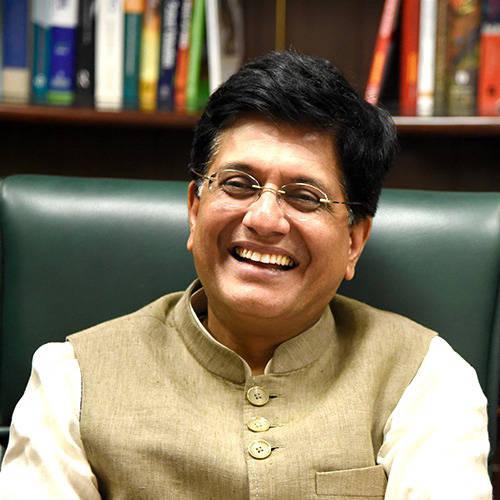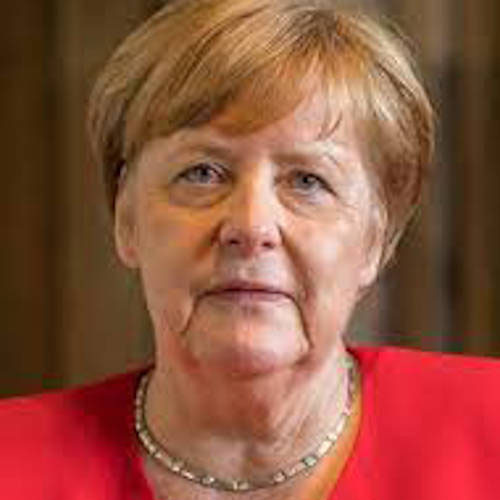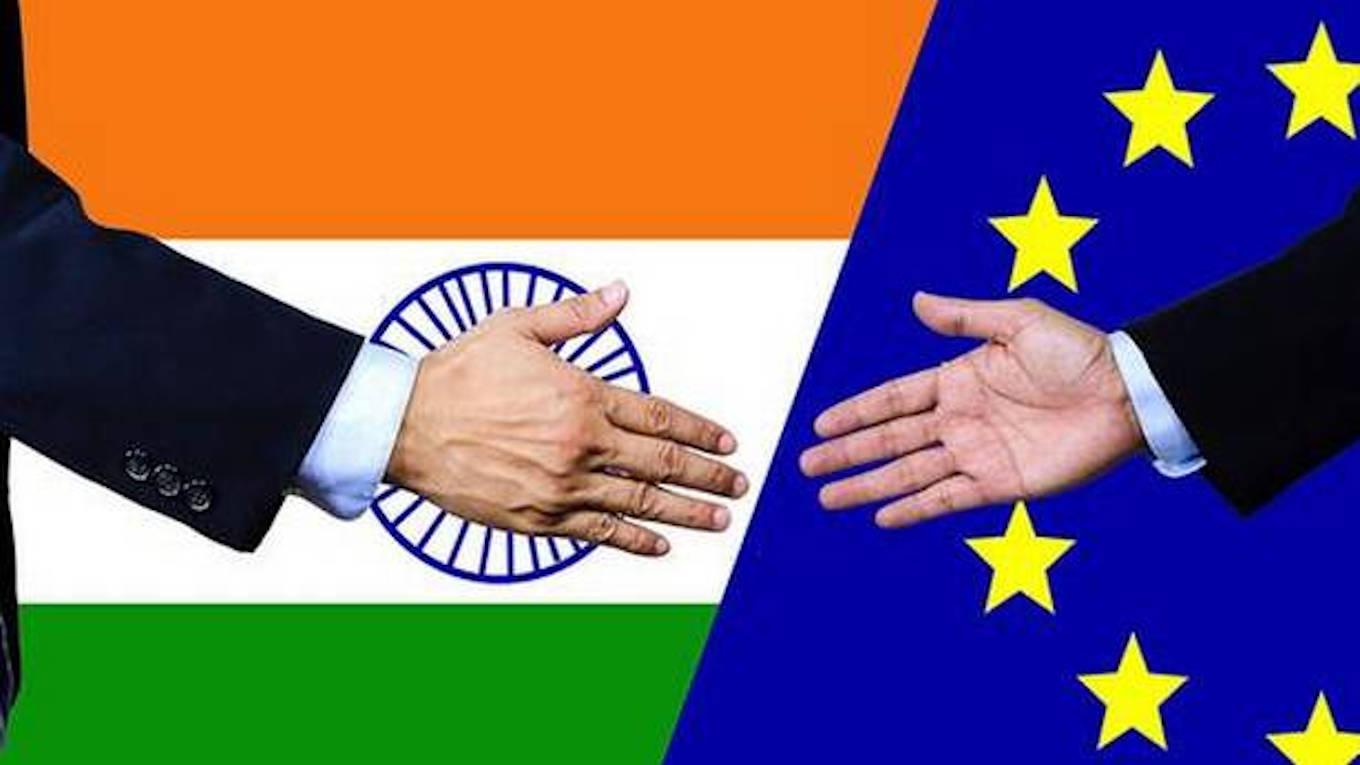-

The India-EU FTA would mark a political turnaround in the approach of the Modi government, which had debunked the FTAs signed by the previous UPA governments as being loaded against India. After keeping out of the China-dominated Regional Comprehensive Economic Partnership (RCEP), the Modi government is now realising the importance of trade agreements to boost its exports.
The proposed agreement is critical for India because apart from RCEP, new arrangements are being mooted to replace the two ‘mega-initiatives’, which went defunct during the Trump era – the Transatlantic Trade and Investment Partnership (TTIP) and the Trans-Pacific Partnership (TPP). Should the new trade arrangements, like the US-Germany FTA, be finalised in the absence of an EU-India FTA, Indian goods may face difficulties in accessing European markets.
Mega trade deals
Mega trade initiatives encourage the creation of global value chains in which production is split across countries to exploit each nation’s comparative advantage, driving down costs while raising standards. At present, India is hardly integrated into the value chains of European companies. Another trade agreement to watch out for is the EU-Vietnam agreement, touted as the most comprehensive trade deal the EU has concluded with a developing country. It takes fully into account Vietnam’s development needs by giving Vietnam a longer, 10-year period to eliminate its duties on EU imports. Such pacts could divert investment away from non-members, with potentially devastating effects for India.
The India-EU summit statement also sets the stage for an agreement for the EU and India to build joint infrastructure projects around the world in the transport, energy and digital sectors. The deal would follow a similar accord between the EU and Japan in 2019, seeking an alternative to Chinese largesse that raised suspicion in the West and Tokyo.
“Our partnership will promote a transparent, viable, inclusive, sustainable, comprehensive, and rules-based connectivity,” the summit statement said, in a veiled criticism of Chinese-financed projects that have sent debts in some central Asian and Balkan countries soaring.
Since 2013, China has launched construction projects across more than 60 countries, known as the Belt & Road Initiative, seeking a network of land and sea links with Southeast Asia, Central Asia, the Middle East, Europe and Africa. The EU is seeking Indian support for its new plan to step up influence in the Indo-Pacific region, using areas from security to health to protect its interests and counter China, although the bloc insists its strategy is not against Beijing.
Goyal-Dombrovskis talks
Sources privy to Union Commerce Minister Piyush Goyal’s virtual meeting with Dombrovskis, which preceded the summit, aver that the prospects for a firm start of negotiations on an India-EU broad-based trade and investment agreement are now brighter than before. This was their second meeting in less than three months; the first was on 5 February, when Goyal hosted the first India-EU high-level dialogue, where the two sides had extensively discussed the state of play of India-EU bilateral trade and investment relations and the way forward. At this discussion also, Dombrovskis had reiterated the EU’s interest in resuming negotiations for an ambitious trade and investment agreement. New Delhi expects the resumption of negotiations for the agreement to begin soon, given the broad-based support to the pact within the EU.
India has been pushing for the two sides to hold negotiations on trade and investment separately, since it feels that it will be easier to seal an agreement on investments. India’s investment agreements with most of the 27 members of the EU expired during 2017-18, leading to higher costs of investment and some uncertainty among European investors. The contentious issues related to market access for an all-encompassing free trade agreement will take more time to be addressed.
The talks with Europe come at a difficult time for India, which is currently engulfed in a devastating wave of Covid-19 infections that could see it suffer the world’s biggest death toll from the pandemic. The two sides are trying to establish a framework to co-operate on tackling the pandemic and on ensuring access to Covid-19 vaccines, diagnostics and treatments.
-

Johnson: keen to stitch up an agreement
Vaccine patents waiver
The timing of the negotiations is also somewhat awkward for the EU, which has been sceptical of the move in the World Trade Organisation by India, along with South Africa, last year for the temporary waiver of certain provisions in the Agreement on Trade-Related Aspects of Intellectual Property Rights (TRIPS) to facilitate fair, affordable and universal access of Covid vaccines and Covid-related innovations, especially for developing countries.
The proposal had gathered the support of 125 countries. Notably, the US has decided to support this proposal, reversing its earlier stance. But, contrary to the impression created, even the US has offered limited backing, which is confined to relaxations for talks on vaccine manufacturing as opposed to India and South Africa’s initial demand to extend the facility to Covid drugs, treatments, diagnostic kits, ventilators, protective gear and other products needed to battle the Covid-19 pandemic. The EU still has reservations.
The October 2020 communication by India and South Africa to the TRIPS Council of the WTO referred to “several reports about intellectual property rights hindering or potentially hindering timely provisioning of affordable medical products to patients”. The two countries had highlighted that some WTO members had carried out urgent legal amendments to their national patent laws to expedite the process of issuing compulsory/ government use licences. “Internationally, there is an urgent call for global solidarity, and the unhindered global sharing of technology and know-how in order that rapid responses for the handling of Covid-19 can be put in place on a real-time basis,” they stressed.
But just how time-consuming the matter was going to become evident when the WTO’s General Council agreed almost eight months later on 5 May this year to ‘continue the discussion’ on India and South Africa’s proposal to waive Intellectual Property Rights on Covid-related innovations. Even commerce ministry officials concede that a waiver of the TRIPS Agreement on a rather wide range of innovations is unlikely to be the topic of a swift multilateral negotiation.
So, India and South Africa are now preparing a revised proposal, which will be discussed by the Council on the Agreement on TRIPS, in the second half of May. The new proposal is likely to focus on a waiver that is significantly narrower in scope and shorter in duration than the one initially proposed by India and South Africa last October.
In preparation for what could finally emerge at the WTO, India is already taking proactive measures like encouraging western patent holders to voluntarily license their patents to manufacturers and reducing regulatory risks for vaccine suppliers to operate in India, to ease the vaccine shortage which has led to serious criticism of the Modi government.
Instead of just insisting on an IP waiver, the government will have to enable Indian vaccine manufacturers to expand production and reduce administrative inefficiencies in procurement and distribution. Concomitantly, the government must assure all vaccine manufacturers that they will face minimum regulatory risks, such as that of unexpectedly imposing price controls. According to a Reuters report, Pfizer is willing to manufacture its vaccine in India, if it is assured freedom to price and export the vaccine.
This is understandable as vaccine development is a risky process and requires significant investments. A commitment to supply vaccines to India requires trust in the country’s regulatory and institutional environment, which the government must strive to instill through dependable commitments. Such confidence, combined with the expedited process for vaccine approval, can help India quickly overcome its supply shortage.
-

Leverage talks with EU
India should now leverage the concessions it will possibly make in the revised proposal to the WTO to get a better deal from the EU in the upcoming FTA talks by directly engaging with Europe’s vaccine powerhouses and coordinating its position with that of EU in the multilateral trade body, instead of letting the US do all the diplomatic heavy-lifting. Text-based negotiations on a patents waiver will take time given the consensus-based nature of the WTO and the complexity of the issues involved. India needs vaccines quickly and the vaccines will come only when all are on board.
When it was first moved, the proposal, known as the TRIPS (Trade-related aspects of intellectual property rights) waiver, had been blocked by some high-income nations, such as the UK, Switzerland, Japan, Norway, Canada, Australia, Brazil, the EU and – until April – the US. This led to an outcry by health experts, human rights groups and international medical charities which argued it is critical to waive IP rights to urgently address global vaccine scarcity amid the pandemic and, ultimately, avoid prolonging the health crisis. This view was in consonance with the stand taken by India. Western and European vaccine makers, on the other hand, said this could disrupt the flow of raw materials, while also leading to lower investments on health research from smaller biotech innovators.
The European opposition to the waiver revolved around the stand that vaccines today constitute the security policy of any country and patents hold the key. It is the story of vaccine nationalism asserting itself. Besides the process of waiving vaccine patents would require a lengthy time span of at least two years at the WTO (unless expedited). The most expedient approach is to overcome existing production bottlenecks, and sell or donate vaccines to countries around the world.
European Commission President Ursula von der Leyen, aware of India’s sensitivities, had been playing a balancing game on the issue. She had previously spoken about her opposition to lifting intellectual property rights, telling The New York Times just weeks ago that she was ‘not at all a friend of releasing patents’. Later, with the prospect of trade talks with India in the air, she moderated her stand. She said the bloc was ‘ready to discuss’ the proposal on waiving patents, adding a rider: “The point I want to emphasise is that we are willing to go into the discussion, but we need a 360-degree view on it and not shy away from other topics.”
The EC president said that the patent waiver will not help increase the immediate access of vaccines required to control the pandemic. “This is not something which will bring within the next month, perhaps within the next year, any vaccines. But, we need vaccines now,” she asserted. Instead, “regions which are producing vaccines at large scale should share these vaccines through exports”. She was pointing the finger squarely at the US, which had banned all exports of domestically-produced vaccines. It was only in late April that the US announced that it would share in coming months 60 million doses of AstraZeneca vaccine which had been stockpile but never used as it had not got formal approval from the US FDA.
-

Merkel: the elephant in the room
For India, the elephant in the room was Germany, which is EU’s biggest economic power and home to a major pharmaceutical sector, including BioNTech, which developed one of the most widely-used corona-virus vaccines in collaboration with Pfizer. In its latest stand, the German government said the US-backed proposal would have ‘significant implications for vaccine production as a whole’. Germany took the stand that “the limiting factors in the production of vaccines are the production capacities and the high quality standards and not patents.”
“I don’t believe that the waiver of patents is a solution to provide vaccines for more people,” said German Chancellor Angela Merkel whose term is coming to an end in September. “Instead, I believe that we need the creativity and innovative force of companies, and for me, this includes patent protection.” During the EU leaders’ dinner in Portugal, Merkel reportedly warned her colleagues that a patent waiver could do more to benefit a geopolitical rival like China, which has production capacity to make use of new messenger RNA technology, than it would to help needy countries in Africa obtain vaccines.
While several EU leaders have individually thanked India for medical supplies it provided last year, while Europe battled the pandemic and have extended solidarity and support to the people of India and the government amid the current Covid crisis, there is clearly no outright support on the waiver – this, despite Modi’s fervent appeal to the EU leadership in his address to the India-EU summit to support the TRIPS waiver. A lot will now depend on how the revised proposal is framed.
According to Vikas Swarup, secretary, ministry of external affairs, “The US has supported the proposal a few weeks ago. The EU’s support at WTO for this waiver will ensure that we can scale up the vaccine production for equitable and global access and save lives.” Swarup also stated that every EU leader spoke about the need for greater cooperation between India and EU for vaccine production, including a “proposal from one of the leaders for partnership with India in the Indo-Pacific for ensuring vaccine access”. Therein lies hope for the issue to be resolved. Handled well, the brouhaha over the vaccine patents waiver and the eight-year wait for the FTA will be worth it.
-

Not by waiver alone
The process of vaccine development and manufacturing has several steps, and involves a complex intellectual property mechanism. Different types of IP rights apply to different steps and there is no one kind of IP that could unlock the secret to manufacturing a vaccine.
A patent protects the conceptual knowledge of key ingredients used for the vaccine and the process of triggering a biological reaction that builds immunity. The expertise to manufacture it may be protected as a trade secret, and the data from clinical trials to test vaccine safety and efficacy may be protected by copyright.
Thus, a patent waiver alone does not empower manufacturers to start vaccine production immediately. It is a slow and uncertain process that requires manufacturers to jump through several hoops. They will need to design the process for manufacturing the vaccines, source necessary raw materials, build production facilities, and conduct clinical trials to get regulatory approvals.
The manufacturing process itself has different steps, some of which may be subcontracted to other parties. Many western and European pharmaceutical majors contend that smaller manufacturers in the developing world, including India, do not possess the technology or the skills to produce such complex vaccines.
Even the US Trade Representative Katherine Tai (who is facing criticism from Republican lawmakers that the intellectual property rights waiver will give critical messenger RNA technology, used in Moderna and Pfizer vaccines, to China, Russia and other strategic rivals, while failing to increase vaccine supplies) agrees. She recently said that the waiver was just one of a number of actions that would be required to increase manufacturing and equitable distribution of vaccines around the world.







































